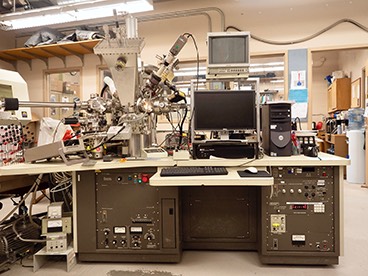X-ray Photoelectron Spectrometer
Physical Electronics 5600
X-ray photoelectron spectroscopy (XPS, also known as ESCA) uses highly focused monochromatized X-rays to probe the material of interest. The energy of photo-emitted electrons ejected from the material by the X-rays are specific to the chemical state of the elements and compounds present. In this way, the bound state or multivalent states of individual elements can be differentiated. Please visit this resource for a tutorial on XPS analysis.
The "small-spot" capabilities allow acquisition of XPS information at 30 μm resolution, making XPS chemical mapping and imaging a viable surface research tool. The XPS can easily analyze nonconductive samples with the system's charge neutralization capability. The rapid entry lock system allows 15 minutes of turn-around time for introducing a sample. The cold stage in the system allows sample analysis at liquid nitrogen temperatures.

Small-spot XPS can provide the following information about samples:
- Elemental identification and quantification
- Chemical functional group identification and quantification
- Chemical state imaging
- Surface sensitivity
- Layer-by-layer depth profiling
- Minimal sample damage
- Analysis of insulating and conducting samples
- Data collection / stage automation
- Cold stage

